A Historic New York Penthouse Comes Alive With Worldly Textiles and a Mix-and-Match Art Collection
You likely have a list of things you want when looking for a new place. Perhaps it's an en suite washer and dryer and two bathrooms, or maybe it's an elevator and good light. For Linda Holliday, founder and CEO of Citia, and her husband, Ali Naqvi, they were hoping to snag an NYC apartment with one of the most enviable views in town. “We wanted something with a terrace,” Linda says. “That’s what you think of when you think of the quintessential New York apartment.”
What they got: a three-floor penthouse “mansion in the sky,” as Linda likes to call it, located in the historic 30-story Oliver Cromwell Building on West 72nd Street, across from the famed Dakota Apartments and less than a block from one of the main entrances to Central Park. Not only is the brick and terra-cotta Spanish Revival tower considered one of the finest architectural monuments of the 1920s, the location can’t be beat.
“We have 360-degree views, a view of the Central Park reservoir from our bedroom, and we are across from the Imagine circle,” she says. Enviable views indeed.
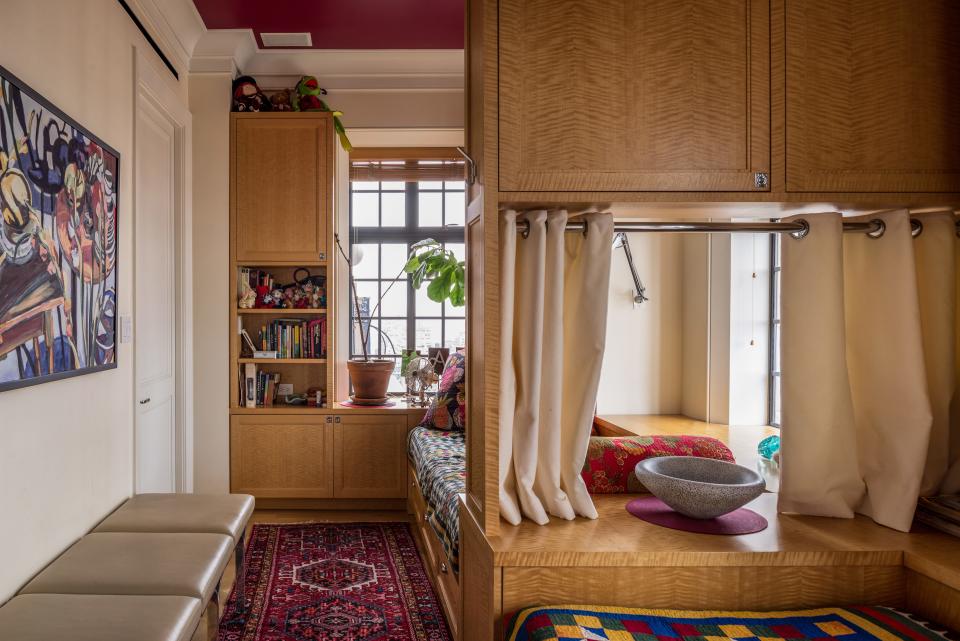
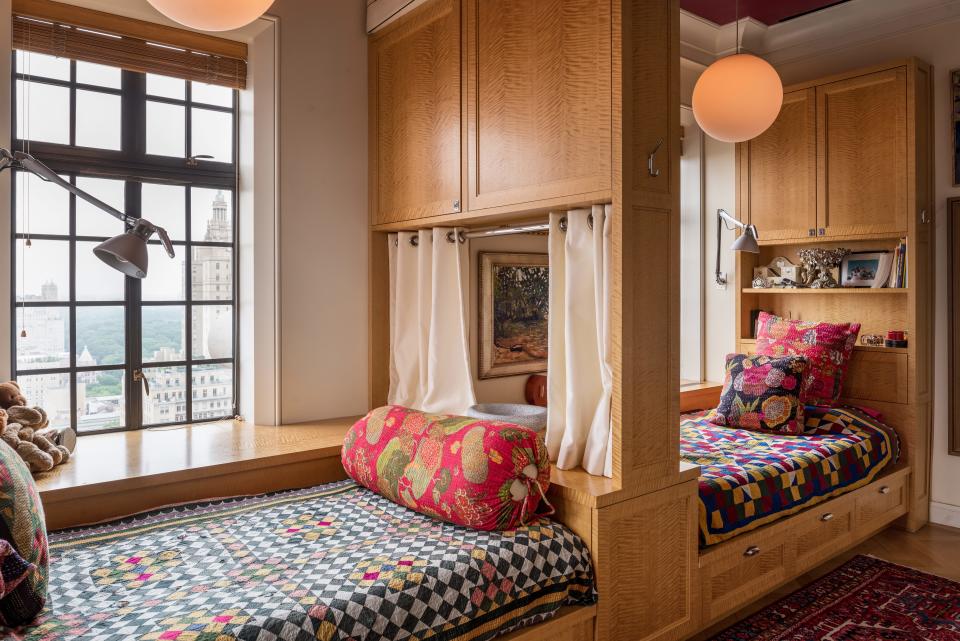
The innate charm of the Cromwell building’s oak herringbone floors, steel spiral staircase, oversized patio, and separated living spaces was definitely a draw, too. Plus, with two teenage daughters, the now empty nesters knew their girls would appreciate the privacy the penthouse affords. Linda felt comfortable designing the space, but she had an expansive art collection and way too much furniture. She knew she needed help streamlining her vision, so she called in Seattle designer Kristen Becker of Mutuus Studio to outfit their new home.
Not surprisingly, the 100-year-old unit was in need of some modernization. “We had this really ugly French kitchen and needed to strip down and replace the carpeting on the stairs,” she says. And though they could afford a full gut, they preferred to keep the historical elements intact. Kristen, who has a background in sustainable architecture, was key in the reno.
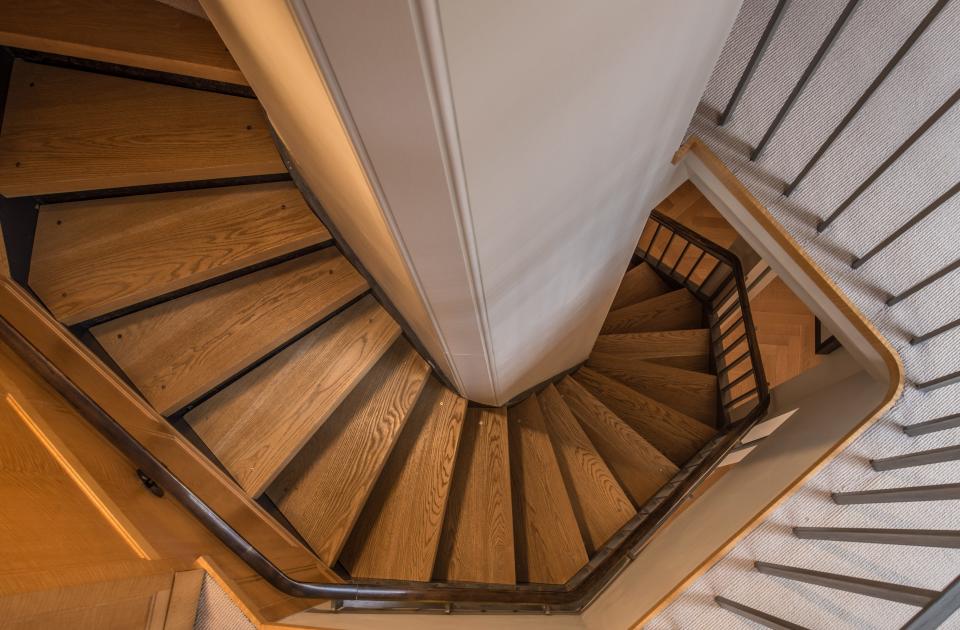
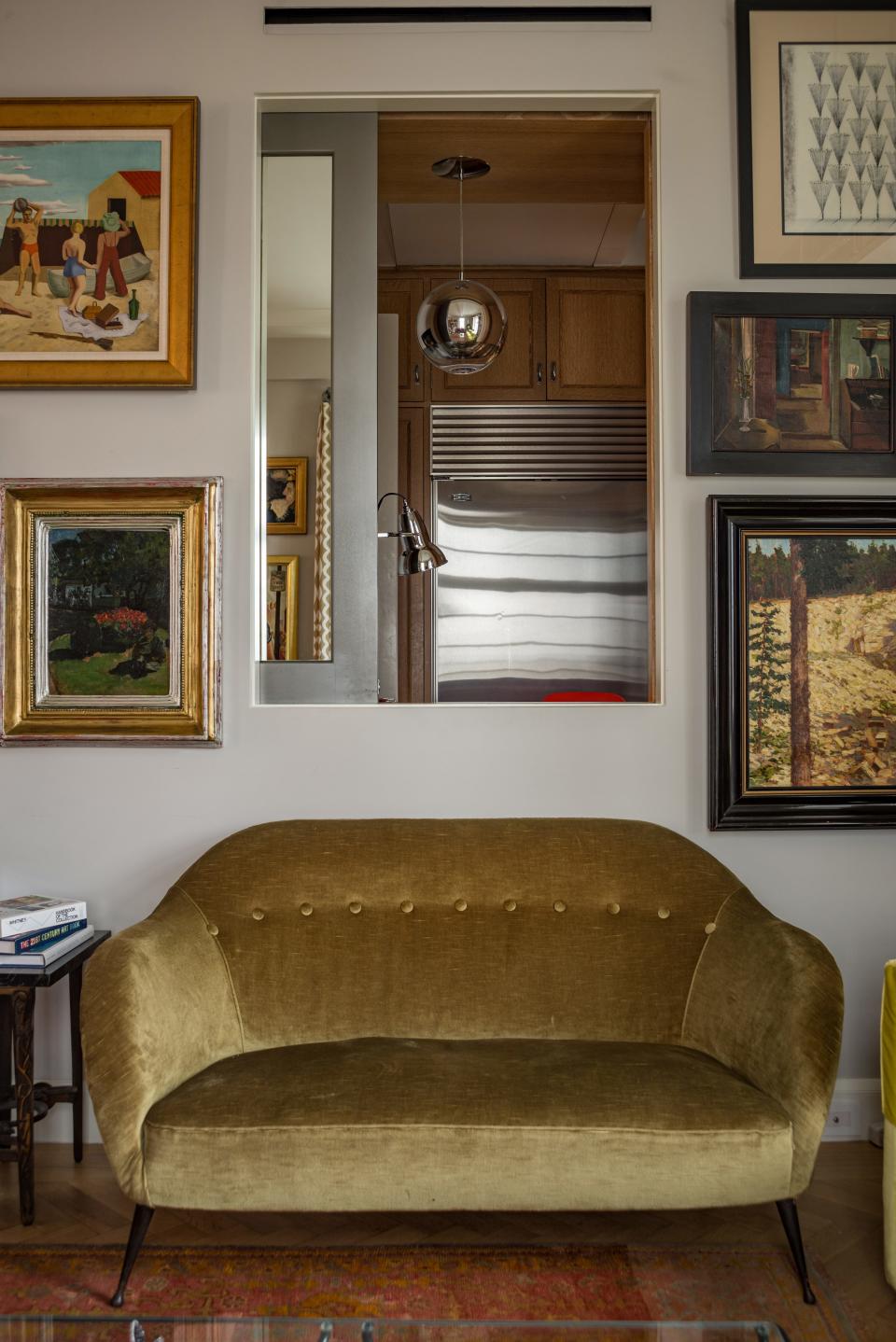
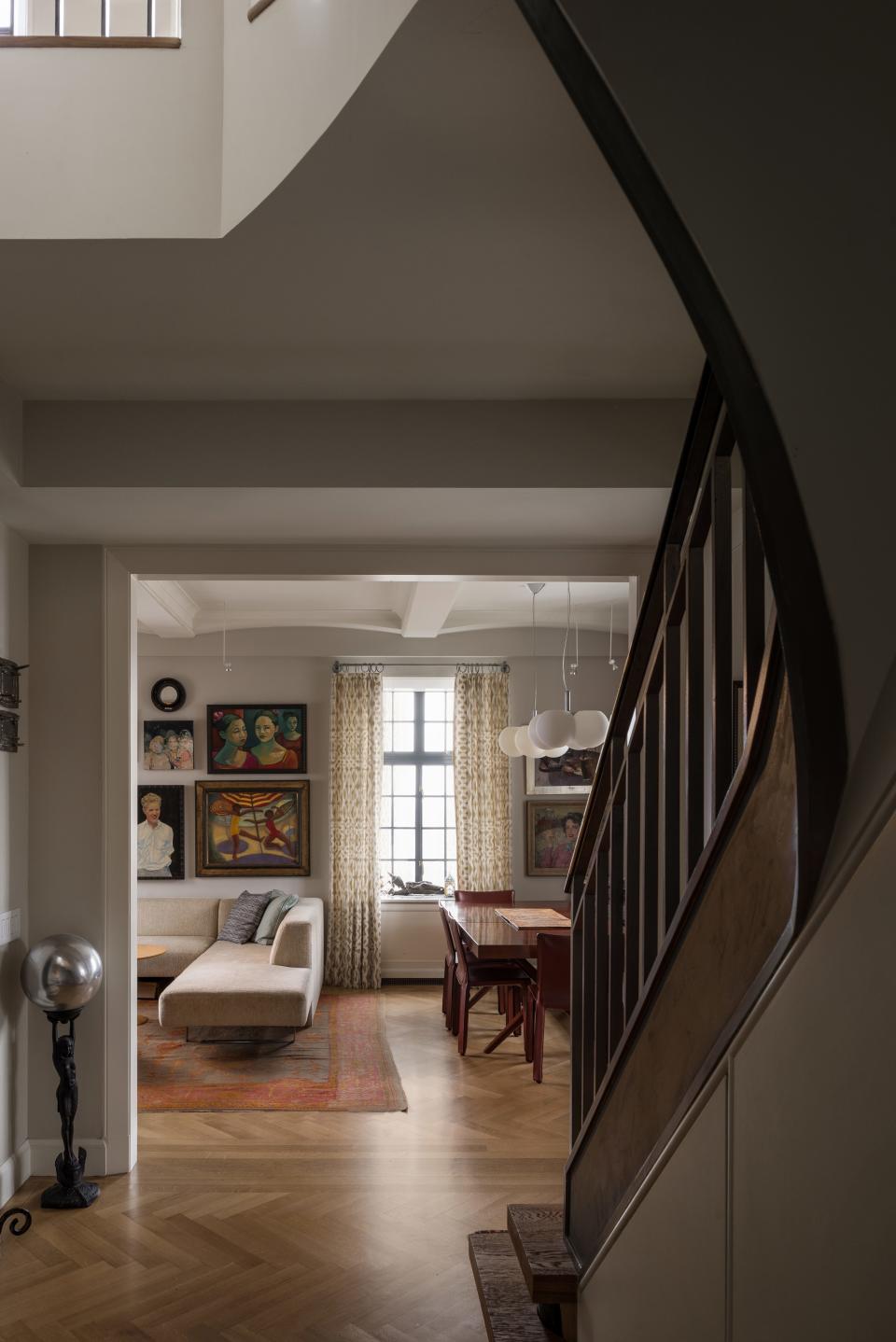
The rooms are cozy and quite small, which made the choice of pieces to feature that much more crucial. The standout item in the living room is definitely the chartreuse couch, a vintage reupholstered pick that Linda’s husband was not thrilled with at the start. “He almost killed me,” she says.
Then there’s the collection of books, travel trinkets, and Linda's huge trove of art, which features paintings by European artists (plus a few she picked up in bars and on eBay), which are hung salon-style to give the illusion that the space is longer than it is. Linda calls her style modern maximalism, and there’s nothing shy about the patterns, colors, and textiles from China, India, and Turkey she’s combined in her home. “We were drawn to what wasn’t perfect,” Kristen says. “Handmade textiles really spoke to us, and it’s those touches that make it feel warm and welcoming.”
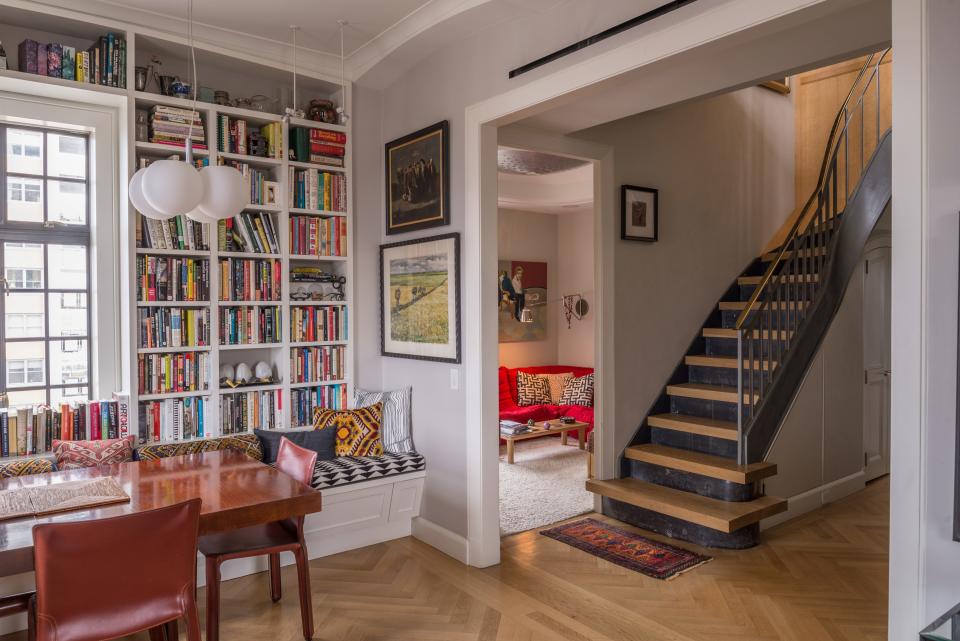
Every item in Linda's family home has meaning, and while it may seem somewhat clichéd now, the design does bring to mind Marie Kondo’s concept of sparking joy. “As a woman, I think this idea that objects have emotional value is really human,” Linda says. “For a long time, we have been purging our spaces, but why not have the things that bring you joy?”
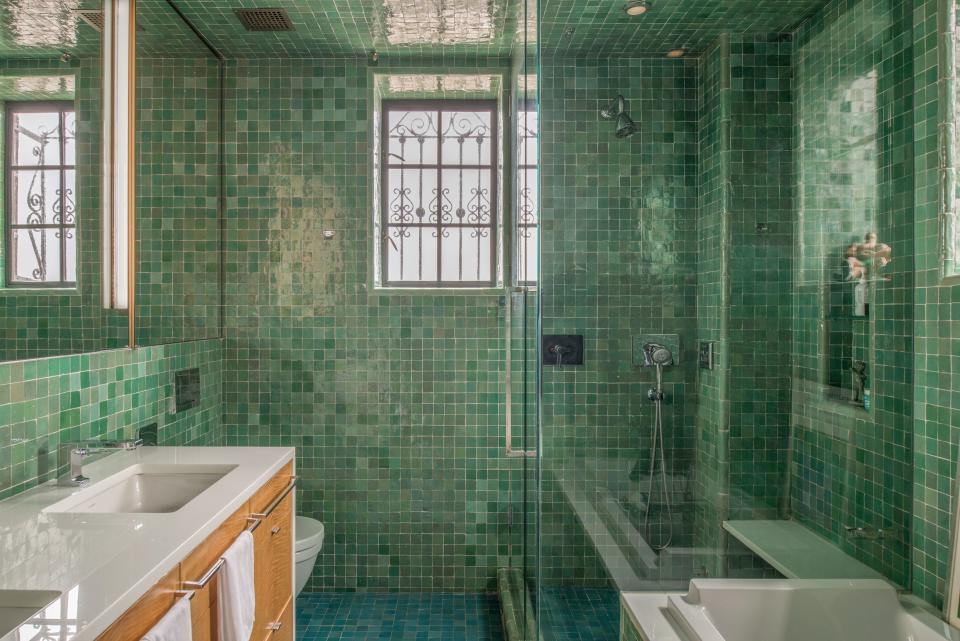
💡 Do It Yourself
For storage, think outside the box. To make the most of the layout, Kristen made some nautical decisions. “We framed out the windows with bookshelving, so the windows were almost portals to the view,” she says. In the girls' bedroom, two built-in bunks à la crew quarters have curtains in between for privacy.
Invest in the handmade. Many of the textiles are handcrafted, and for Linda that's what makes each pattern so special. Though they may be more expensive than many factory-made fabrics, she thinks it’s worth the investment to support the livelihood of makers. “As the world gets more commercial, the fine needlework that our grandmothers used to do is dying out entirely,” she says. “The actual craft is going extinct.”
Don’t be afraid of allover color. The teal bathroom is one of Linda’s favorite rooms in the house—she can’t help but smile when she walks by the fully tiled room. The girls' room features a deep magenta ceiling, a color that Linda and Kristen might never have picked themselves, but “the integration of colors felt completely right against the wood, textures, and layers, and it comes together really well,” Kristen says.
🛍 Shop It Out
Architectural Digest may earn a portion of sales revenue from purchases made through affiliate links on our site.
Paolo Piva Italian Design Coffee Table Model Alanda for B&B, $1,212, 1stdibs.com
Suki Cheema Nuba Cushion, $72, sukicheema.com
RCEEF ceramic tile, mosaichse.com
Flos Glo-Ball S Pendant Ceiling Light, $595, usa.flos.com
Ligne Roset Red Togo Modular Sofa, $2,380, 1stdibs.com
Originally Appeared on Architectural Digest

